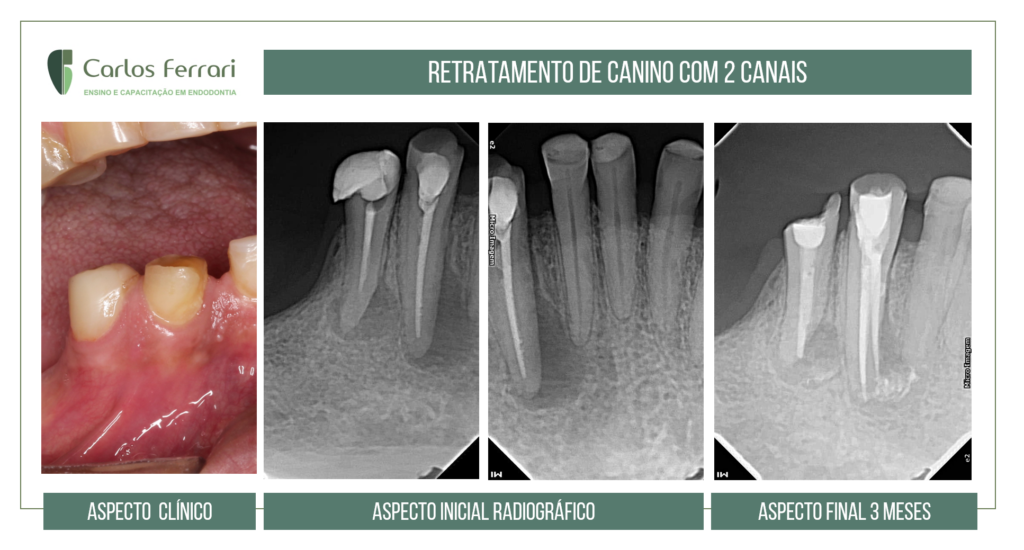
Endodontic anatomy. Retreatment of a canine with two canals.
Endodontic anatomy of the lower canine. Patient came to the clinic with a complaint of mild pain when biting on the region of the...

Endodontic anatomy of the lower canine. Patient came to the clinic with a complaint of mild pain when biting on the region of the...

All set for the Endodontics Recycling course tomorrow. Update in all techniques aiming at the single session and...
Calcium metamorphosis of the pulp
May was the graduation of the class I of Endodontics of HPG Brasilia. We wish the new endodontists much success in their work.
Endodontic preparation of a 26/27 mm molar using Maillefer's Trunatomy system. More conservative preparations, with less...
Patient sent for endodontic treatment of element 31 due to observation of periapical radiolucent image. On clinical examination, the tests revealed no different response in relation to adjacent teeth, positive in relation to the thermal test with gas and negative to percussion. Slight pain was reported in relation to the palpation test in the root region of tooth 31. On probing, periodontal pocket was revealed in the proximal regions. The presence of calculus was also observed. The pathology was diagnosed as of periodontal origin and the case was sent to the periodontist for treatment and orientation for possible endodontic treatment concomitant with periodontal.
Patient under orthodontic treatment, referred for endodontic treatment due to visualization of a "periapical lesion" on teeth 43 and 44. After clinical and radiographic exams, we diagnosed the teeth as normal pulp, without inflammation, and the patient was referred again to the indicator, with the recommendation of proservation. Case conducted in class I of specialization in endodontics at HPG Brasília by students Bianca and Leticia.
A case referred to the clinic by a colleague for possible surgical treatment of a periapical lesion related to tooth 12, observed...
Positive pulp vitality test after endodontic treatment in a tooth with periapical lesion. An interesting and atypical case in which the...
Starting in May we are also at the APCD of São José dos Campos with the Specialization course in Endodontics,...